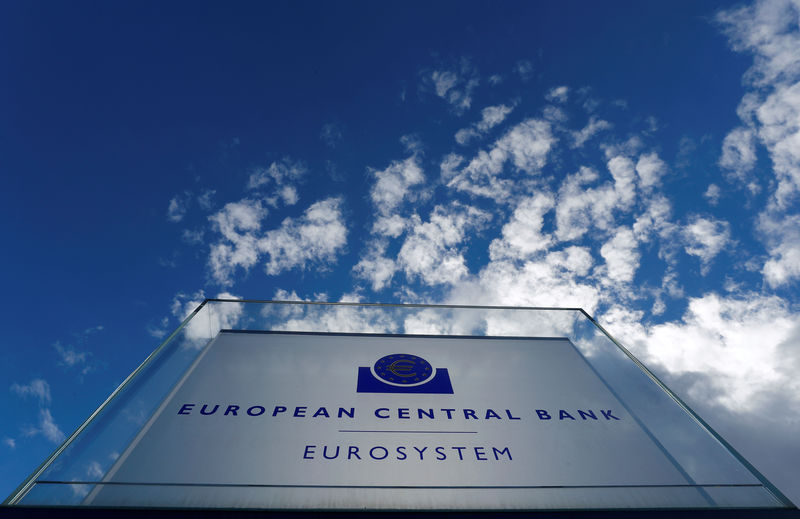LONDON (Reuters) - The European Central Bank doubled down on its negative rate policy on Thursday, meaning banks will now have to pay 0.5% interest simply for depositing much of their spare cash with it - an attempt to make them lend more to kickstart the economy.
While such a policy is widely considered valid only for economies in Europe and Japan with chronically low inflation and weak growth, the idea is attracting other supporters elsewhere - not least U.S. President Donald Trump, who has labeled U.S. central bankers "boneheads" for not resorting to it.
This is how a negative rate policy works alongside some of its potential pitfalls:
WHY HAVE SOME CENTRAL BANKS ADOPTED NEGATIVE RATES?
To battle the global financial crisis triggered by the collapse of Lehman Brothers in 2008, many central banks cut interest rates near zero. A decade later, interest rates remain low in most countries due to subdued economic growth.
With little room to cut rates further, some major central banks have resorted to unconventional policy measures, including a negative rate policy. The euro area, Switzerland, Denmark, Sweden and Japan have allowed rates to fall to slightly below zero.
HOW DOES IT WORK?
Under a negative rate policy, financial institutions are required to pay interest for parking excess reserves with the central bank. That is, any surplus cash beyond that which regulators say banks must keep on hand. That way, central banks penalize financial institutions for holding on to cash in the hope of prompting them to boost lending to businesses and consumers.
The ECB introduced negative rates in June 2014, lowering its deposit rate to -0.1% to stimulate the economy. Describing the euro zone economy as mired in a period of "protracted" weakness, ECB chief Mario Draghi announced on Thursday a 10-basis-point cut in the deposit rate to -0.5% from its previous -0.4%.
The Bank of Japan (BOJ) adopted negative rates in January 2016, mostly to prevent an unwelcome strengthening of the yen from hurting an export-reliant economy. It charges 0.1% interest on a portion of excess reserves financial institutions park with the BOJ.
WHAT ARE THE PROS, CONS?
Aside from lowering borrowing costs, advocates of negative rates say they help weaken a country's currency by making it a less attractive investment than other currencies. A weaker currency gives a country's export a competitive advantage and boosts inflation by pushing up import costs. This is one of Trump's motivations for wanting negative rates on the dollar.
Negative central bank rates also lower borrowing costs on a whole range of instruments, meaning that businesses and households get even cheaper loans.
But negative rates also narrow the margin that financial institutions earn from lending. If prolonged ultra-low rates hurt the health of financial institutions too much, they could stop lending and damage the economy.
There are also limits to how deep central banks can push rates into negative territory - depositors can avoid being charged negative rates on their bank deposits by choosing to store actual banknotes instead.
WHAT ARE CENTRAL BANKS DOING TO MITIGATE THE SIDE-EFFECTS?
The BOJ adopts a so-called "tiered" system under which it charges 0.1% interest only to a small portion of excess reserves financial institutions deposit with the central bank. It applies a zero or +0.1% interest rate to the rest of the reserves.
The ECB has a different system of tiering, inspired by one used by the Swiss National Bank, under which a portion of bank deposits, currently set at six times their mandatory reserves, is exempted from the charge.
Yet critics point out that the exemption will result in an annual saving of only 2-3 billion euros for the entire euro zone banking system. That equals only about 1% of these banks' profits last year. Moreover, as excess liquidity is concentrated at larger banks in richer countries such as Germany and France, the scheme will not benefit all banks equally. This risks exposing barely concealed political divisions between euro zone policymakers.
Just this week, the Dutch parliament, ignoring the convention that central banks should be free from political pressures, wrote to ECB President Draghi to tell him it opposed a "tiered" rate system because it could harm Dutch pension funds.

While on Friday, Mass-selling German newspaper Bild accused Draghi of "sucking dry" the bank accounts of Germany's savers with negative rates.